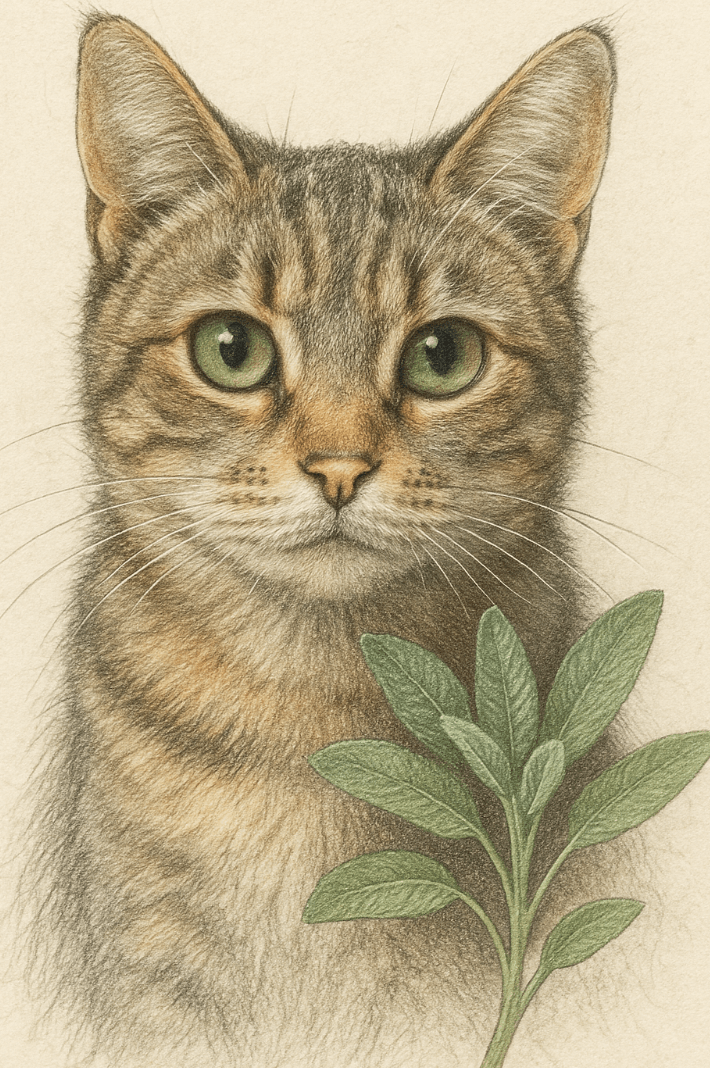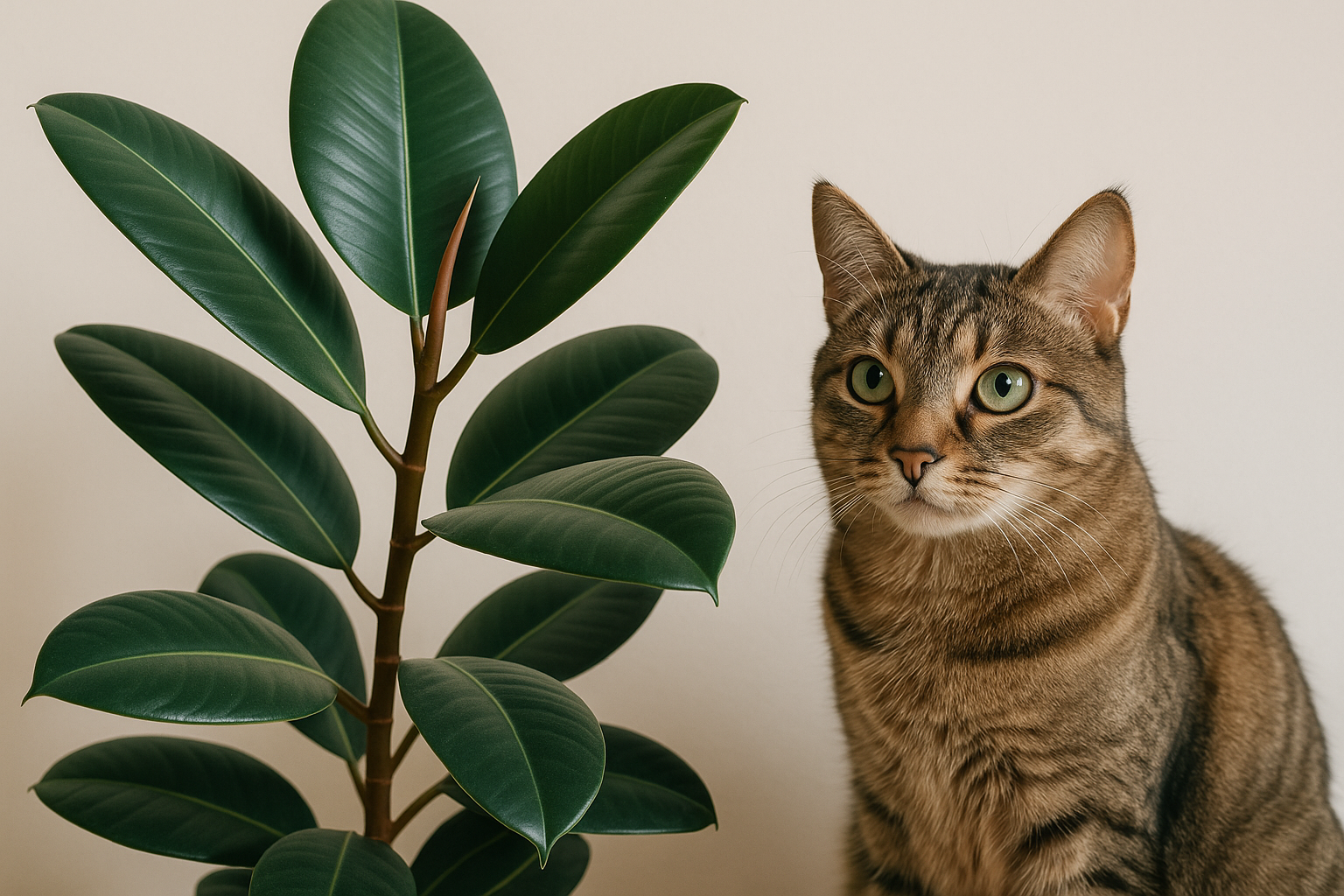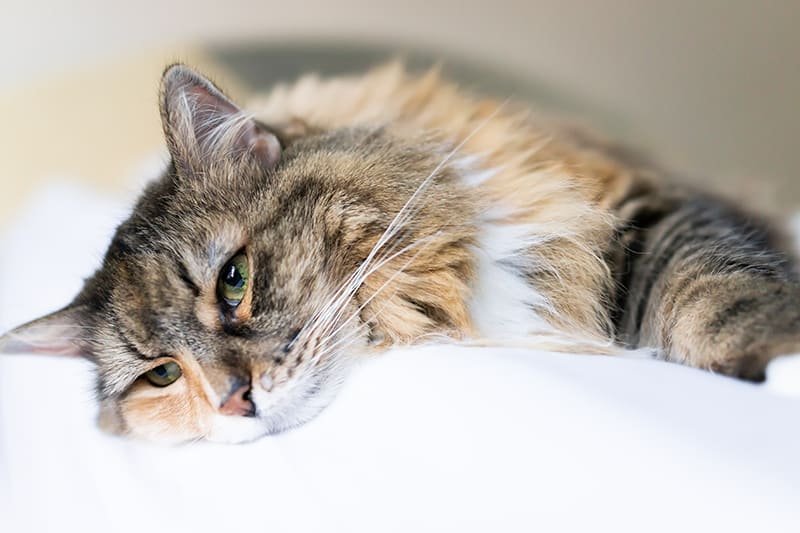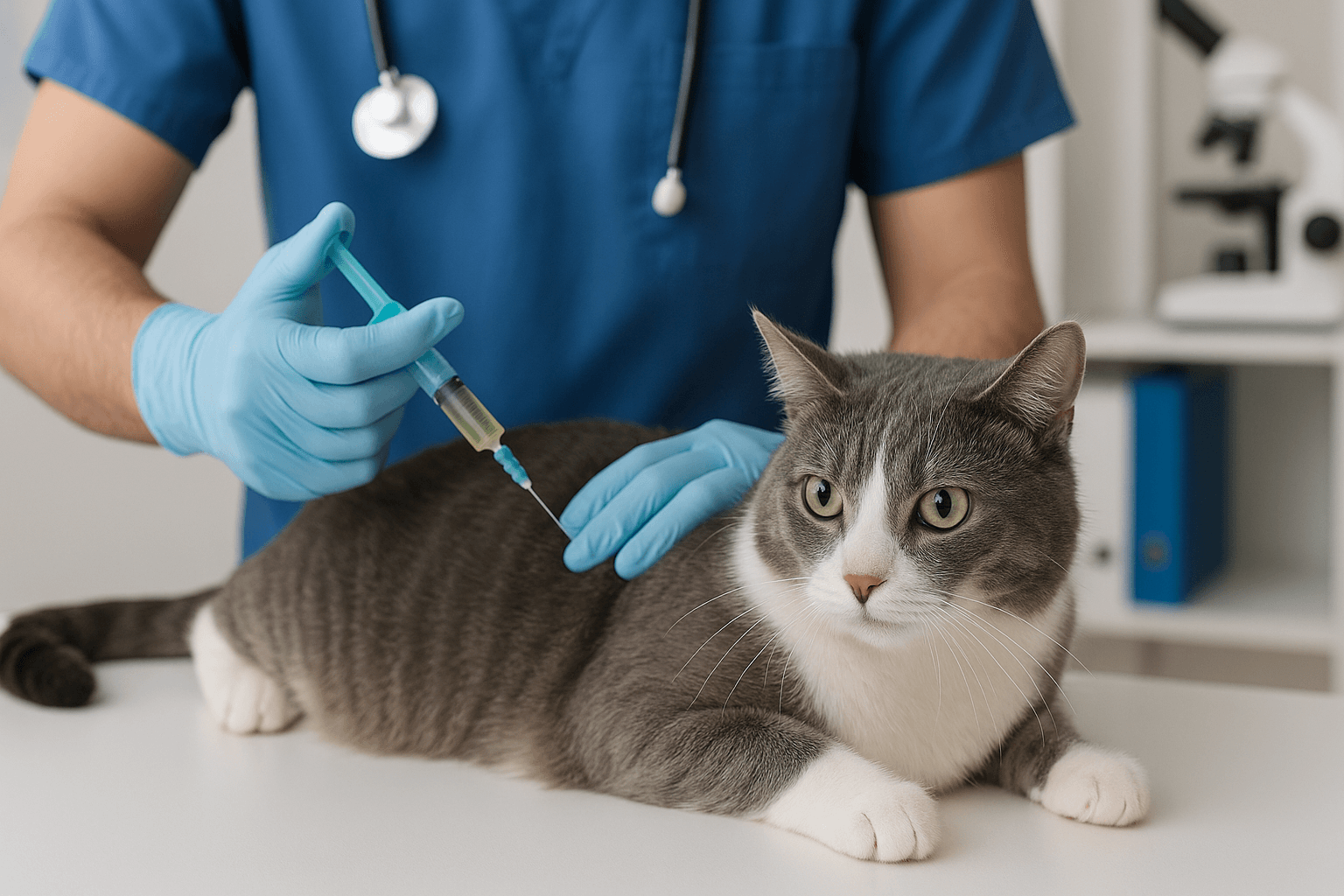Can Cats Eat Sage? What You Need to Know
Sage, a fragrant herb often found in kitchens and gardens, is well-known for its culinary and medicinal uses. But when it comes to our feline friends, can cats eat sage safely? While small amounts of sage are unlikely to harm your cat, there are important considerations to keep in mind. Cats have unique dietary needs and sensitivities, and certain herbs, including sage, may pose risks if consumed in large quantities or over time. In this blog post, we’ll explore whether sage is safe for cats, potential benefits, risks, and how to introduce it responsibly into their diet. By understanding the facts, you can ensure your cat stays healthy and happy while avoiding unnecessary hazards.
Potential Benefits of Sage for Cats
While sage isn’t a staple food for cats, it does offer some potential benefits when used sparingly and under supervision. Here’s what makes sage worth considering in small doses.
Rich in Antioxidants:
Sage contains antioxidants that may help support your cat’s immune system and overall health.Anti-Inflammatory Properties:
The anti-inflammatory compounds in sage could aid in reducing minor inflammation or discomfort.Digestive Support:
In small amounts, sage has been known to soothe digestive issues like gas or bloating in some animals.Natural Deodorizer:
Sage’s aromatic properties can help freshen your cat’s breath if used in moderation as part of a dental care routine.Herbal Calming Effects:
Some pet owners report that sage has mild calming effects, which may help reduce anxiety in sensitive cats.
While these benefits exist, it’s crucial to use sage cautiously and consult your veterinarian before introducing it to your cat’s diet.
Risks of Feeding Sage to Cats
Despite its potential benefits, sage also carries risks that every cat owner should be aware of. Overconsumption or improper use can lead to adverse effects.
Thujone Content:
Sage contains thujone, a compound that can be toxic to cats in large amounts, potentially causing digestive upset or neurological symptoms.Upset Stomach:
Consuming too much sage may lead to vomiting, diarrhea, or other gastrointestinal issues in cats.Allergic Reactions:
Some cats may develop skin irritation, itching, or respiratory issues after exposure to sage.Interference with Medications:
Sage can interact with certain medications, such as those for blood pressure or diabetes, posing additional risks for medicated cats.Toxicity Risk in Essential Oils:
Never expose your cat to sage essential oil, as it’s highly concentrated and can be extremely toxic when ingested or inhaled.
Understanding these risks ensures you approach sage with caution and prioritize your cat’s safety above all else.
Check this guide 👉Can Cats Eat Mice? Best 7 Expert Tips!
Check this guide 👉Can Cats Eat Gummy Bears? Best 7 Expert Tips!
Check this guide 👉Can Cats Eat Walnuts? Best 7 Expert Tips!
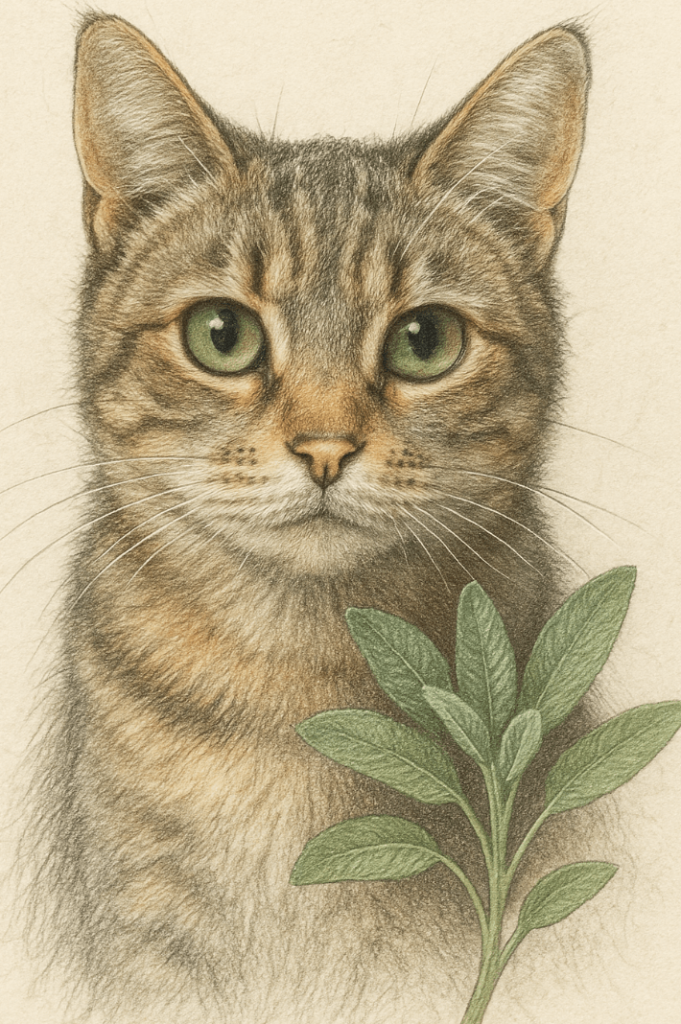
Safe Uses of Sage for Cats | Unsafe Uses of Sage for Cats |
|---|---|
Small amounts as an occasional treat | Large quantities or frequent feeding |
Fresh or dried sage in moderation | Sage essential oils or extracts |
Added to homemade cat-safe recipes | Use during pregnancy or illness |
Topical use (if tolerated) | Application near eyes or nose |
Under veterinary guidance | Mixing with toxic foods or spices |
How to Safely Introduce Sage to Your Cat
If you’re considering adding sage to your cat’s diet or environment, it’s essential to do so safely and responsibly. Follow these guidelines to minimize risks.
Start with Tiny Amounts:
Offer only a pinch of fresh or dried sage at first to gauge your cat’s reaction.Observe for Reactions:
Watch for signs of digestive upset, allergic reactions, or behavioral changes after introducing sage.Avoid Seasoned Sage Dishes:
Don’t feed your cat sage prepared with salt, spices, or other ingredients that could be harmful.Consult Your Veterinarian:
Always seek professional advice before incorporating new foods or herbs into your cat’s routine.Use Only Food-Grade Sage:
Ensure the sage you offer is free from pesticides, chemicals, or additives unsafe for pets.
By taking these precautions, you can safely determine whether sage suits your cat’s individual needs.
Signs Your Cat May Be Sensitive to Sage
Even when used responsibly, some cats may show sensitivity or adverse reactions to sage. Recognizing these signs allows you to act quickly and protect your cat’s health.
Vomiting or Diarrhea:
Gastrointestinal distress is one of the most common signs of sage intolerance in cats.Excessive Drooling:
Excessive salivation may indicate oral irritation or nausea caused by sage consumption.Lethargy or Weakness:
A sudden lack of energy could suggest toxicity or an adverse reaction to the herb.Difficulty Breathing:
Labored breathing might occur if your cat has inhaled or ingested sage essential oil.Skin Irritation or Itching:
Redness, swelling, or scratching may signal an allergic reaction to sage.
If you notice any of these symptoms, stop offering sage immediately and contact your veterinarian for guidance.
Common Mistakes to Avoid When Using Sage Around Cats
When introducing sage to your home or cat’s diet, it’s easy to make mistakes that could endanger your pet. Here are some pitfalls to avoid.
Using Too Much Sage:
Even small amounts can be risky if given too frequently; moderation is key.Mixing Sage with Harmful Ingredients:
Adding sage to dishes containing garlic, onions, or spices can create a toxic combination for cats.Ignoring Allergies or Sensitivities:
Not all cats tolerate sage well; ignoring warning signs can lead to serious health issues.Applying Essential Oils Near Cats:
Diffusing or applying sage essential oil in your home can harm your cat’s respiratory system.Skipping Veterinary Guidance:
Assuming sage is safe without consulting a vet can result in unintended consequences.
Avoiding these mistakes ensures a safer experience for your cat.
Alternatives to Sage for Your Cat’s Wellness
If you’re looking for ways to enhance your cat’s health without using sage, there are plenty of safe alternatives to consider.
Catnip:
A popular herb that many cats enjoy, catnip is non-toxic and provides mental stimulation.Parsley:
Rich in vitamins, parsley can freshen your cat’s breath and support urinary health in small amounts.Chamomile:
Known for its calming effects, chamomile tea (cooled and diluted) may help soothe anxious cats.Rosemary (Minimal Use):
Rosemary has antioxidant properties but should only be offered sparingly and under supervision.Plain Water Additives:
Specialized water additives designed for cats can promote hydration and dental health safely.
These alternatives allow you to cater to your cat’s needs without the risks associated with sage.
Understanding Your Cat’s Relationship with Herbs
Cats have a unique relationship with herbs due to their obligate carnivore nature and sensitive systems. Understanding this dynamic helps explain why certain plants affect them differently.
Limited Herb Digestion Ability:
Cats lack specific enzymes needed to process many plant-based compounds efficiently.Attraction to Certain Scents:
Some cats are naturally drawn to herbs like catnip or valerian due to their stimulating effects.Avoidance of Strong Smells:
Strong-smelling herbs like sage may deter cats from approaching or consuming them instinctively.Curiosity vs. Caution:
Cats’ curiosity often leads them to investigate herbs, but caution is necessary to prevent accidental ingestion.Individual Tolerance Levels:
Each cat reacts differently to herbs, making it essential to observe and adapt based on their behavior.
By recognizing these factors, you can better navigate your cat’s interactions with herbs like sage.
Frequently Asked Questions About Cats and Sage
Is sage safe for cats in small amounts?
Yes, small amounts of fresh or dried sage are generally safe, but always monitor your cat for adverse reactions.
Can I use sage essential oil around my cat?
No, sage essential oil is highly toxic to cats and should never be used in their presence.
What should I do if my cat eats too much sage?
Contact your veterinarian immediately if your cat shows signs of illness after consuming sage.
Are there alternatives to sage for my cat’s health?
Yes, cat-safe herbs like parsley or catnip can provide similar benefits without the risks associated with sage.
Can kittens eat sage?
Kittens are more vulnerable to toxins; avoid giving them sage and focus on species-appropriate nutrition instead.
Prioritizing Your Cat’s Health When Considering Sage
While sage offers some potential benefits for cats, its risks outweigh its rewards if not used carefully. Understanding the fine line between safe and unsafe usage ensures your cat remains healthy and happy. Always prioritize moderation, observation, and professional guidance when introducing new foods or herbs to your feline friend. Remember, your cat relies on you to make the best choices for their well-being—so err on the side of caution when it comes to herbs like sage. With responsible care, you can continue providing your cat with a safe and enriching environment.
Is the Rubber Tree Cat Safe? Best 7 Expert Tips! Discover expert advice on keeping rubber plants safely in cat-friendly homes and learn top tips for pet-safe plant care.
Low Red Blood Cell Count in Cats: Best 7 Expert Tips! Discover causes, symptoms, and treatment options for feline anemia. Learn how to support your cat’s health effectively with expert advice.
Understanding Megacolon Treatment: Best 7 Expert Tips! Discover effective strategies to manage feline megacolon, from dietary changes to surgical options, ensuring your cat’s comfort and long-term health.
How to Register a Therapy Cat: Best 7 Expert Tips! Discover essential steps to certify your cat as a therapy animal, prepare them for training, and make a meaningful impact in therapeutic settings.

